Is greatness judged according to opinion or outcomes? The acronym GOAT (greatest of all time) is thrown around among sports fans on a regular basis. Opinions are shared—team loyalties are factored—records and Championships are counted up—and conclusions are reached. Tom Brady or Patrick Mahomes? LeBron James or Michael Jordan? Pele or Reynaldo? Federer or Nadal? Simone Biles or Nadia Comaneci? The argument is relentless.
None of us would be witness to these Gods of sport without the lensmen who freeze in time their superhuman feats. A captured moment of magic for history and opinionated review.
Long before ESPN’s top ten and the ubiquity of video-everything, there was Sports Illustrated Magazine—the GOAT of sports writing and photography. That debate is settled for all time. Published every Thursday for decades—beginning in 1954—SI became the Bible for true sports fans. In-depth, long-form articles by writers like the legendary Frank Deford, combined with photography by the great Walter Iooss, Jr. and many others, provided a glimpse behind the scenes of mere scoreboard reporting by most other publications.

The same argument for who is the greatest is had over the writers and photographers whose work graced the covers and pages of the must-have magazine for sports fans. I personally subscribed to Sports Illustrated beginning as a teenage athlete and continued until only recently. The magazine missed its first delivery in seventy years in May 2024 as part of the decline and consolidation of print publications.
Robert Beck is a name that likely won’t be familiar to you. He has over 100 Sports Illustrated cover photos in his resume and decades of incredible sports moments captured. High praise from colleagues who have practiced the same craft he has. Beck’s legacy is secure. What was it that made his career and his iconic images so interesting? It happened almost by accident. A combination of preparation meeting an unlikely opportunity.
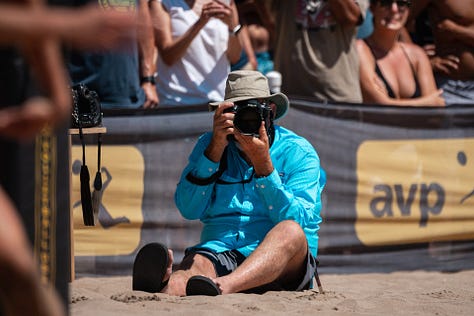
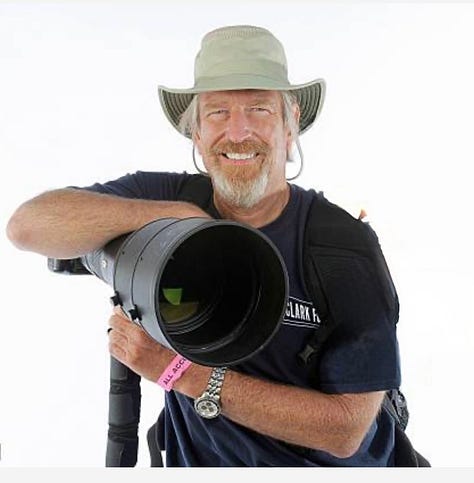
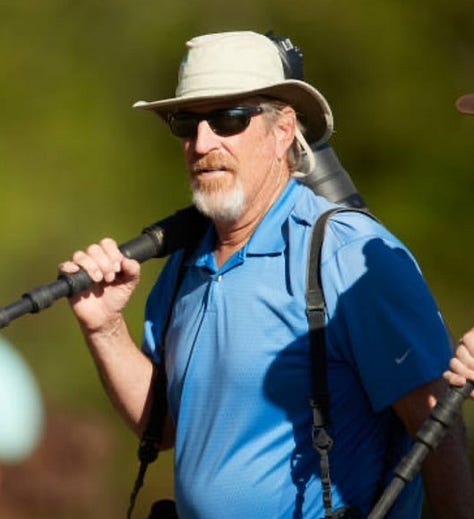
How many photographers—particularly sports photographers—even at SI—have made an image that impacted a culture for decades after its capture? Not many. Robert Beck did exactly that.
I met Robert Beck in the early 90s on the beach volleyball circuit while I was traveling like a carny as an event announcer and associate producer for the tour. I wrote about it a bit here. This was while he was on assignment for Sports Illustrated, but prior to becoming a full-time staff photog with SI. You could find him easily at the major events—like the Manhattan Beach Open beach volleyball classic—perched on his butt in the shade with his trademark Tilley sunhat. We’ve stayed in touch off and on over the years. The golf magazine show that I once produced did a feature on Robert about 5 years ago.
As I spoke recently with my friend Robert, I came away with two major themes: right place/right time—and fun. He is one of those rare human beings that has spent his entire professional career having a blast. He has also made some of the greatest sports photographs you’ve ever seen—even though you’ve likely never heard of him.
Now mostly retired from paying work, Beck still occasionally fields phone calls from corporate gigs that pay well, but he finds them incredibly boring, so he takes few if any.
The profession of photography has changed since the advent of the smartphone camera. Everyone now thinks they’re a photographer. Fewer industries, outside of fashion or professional sports, are willing to pay lensmen their rate to capture their brand or their event.
Beck started his career as a schoolteacher and coach. Working in Southern California in the early 80s there was a surplus of schoolteachers. He was mostly working part time as a substitute and a part-time coach. With his afternoons free, Beck borrowed his Dad’s camera and a lens and began going out to the popular surf spots in and around San Diego. He used some spare cash to purchase a waterproof housing and got a little deeper—into the surf—and into his hobby. A full-time teaching offer brought Beck back to the LA area. Part of the curriculum that he taught was a photography and old-school developing class to the mostly Hispanic students in that middle school.
Four or five years later Beck moved back to San Diego to continue his search for career advancement, then soon left the business and decided to try to make a living at photography.
Early Chops
First stop Surfing Magazine—then a quick hop over to Surfer Magazine where he'd work for the next 4-5 years. Beck rode the wave of a golden age in surfing, until the bottom kind of fell out of the surfing industry in the late 80s into the 90s with the onset of grunge music and skateboarding. Beck busted a move to a small San Diego-based stock agency called Focus West which presented more opportunities in traditional ball sports in and around Southern California. As part of Focus West’s stock business Beck found himself back on the beach capturing magic, but this time it was the emerging sport of professional beach volleyball. Aligning with the professional leagues as a staff photographer, the sport fed his career for a decade.
The Sports Illustrated era began accidentally
Maintaining his professional relationship with Focus West during this time, Beck was sent to the Big Island of Hawaii in ‘86 to capture a niche event called The Ironman. He arrived without a hotel room, rental car, or plan. Hotel rooms were scarce. As Robert recalls, I didn’t realize this niche event was so big. Everything was booked everywhere. Coincidentally, his parents were on the island at the same time enjoying a golf vacation with friends, so he intruded on them for a night on the couch.
The next day—the day before the race—Beck showed up at the media center inside a hotel to try and figure out what this event was all about and how to shoot it. The busy woman at the check in says, oh you’re Robert Beck—we’ve been looking for you and I just called your boss back at Focus West to find out if you were coming. Remember that this was ‘86 and Beck—like so many others of us—hadn’t yet made to leap to a pager or a cellphone. He called back to Focus from the media center and his boss said, yeah Sports Illustrated Magazine called us and asked if we had a guy at the Ironman shooting and could they hire him? The media room representative handed him a packet that included a room in the hotel, instructions to meeting the helicopter pilot and his dedicated driver the next morning. And…triple his normal day rate. Robert remembers his reaction. Whoa…SI is the cream of the crop in the sports photography world. One of Beck’s copter shots of the swim portion of the race made the inside table of contents in the next issue. Time Life ended up choosing that photo as one of their Photos of the Decade for the ‘80s. Why? Beck was in the right place at the right time for an emerging—and culturally impactful sport. Opportunity met preparation, which is the definition of luck.
After that event, Sports Illustrated started calling Beck directly rather than going through Focus West. He remembers SI as a ladder relationship—if he did a good job on a call he moved up—if not he’d move back to the bottom or completely off the ladder. Beck kept moving up, becoming a regional asset at first, doing sports events primarily on the West Coast. Clearly Robert was doing a good job, as SI kept calling. He had regular calls to do NHL games as Los Angeles welcomed their new LA Kings—and their new star Wayne Gretsky. Right place right time.
Then came the ‘96 Olympics. Beck, given his history shooting for the professional beach tours was in the right place and time as beach volleyball made its Olympic debut. Shortly after those Games—along with 2 or 3 other guys—Robert was hired as a full-time staff photographers for Sports Illustrated. As a sports photographer, Beck had reached the pinnacle.
Then Tiger Woods burst onto the sports world, and golf coverage exploded. Robert Beck was in the right place at the right time, as Sports Illustrated added a regular weekly insert called Golf Plus that kept Beck busy for 10-12 years, all the while doing the other major sports in between.
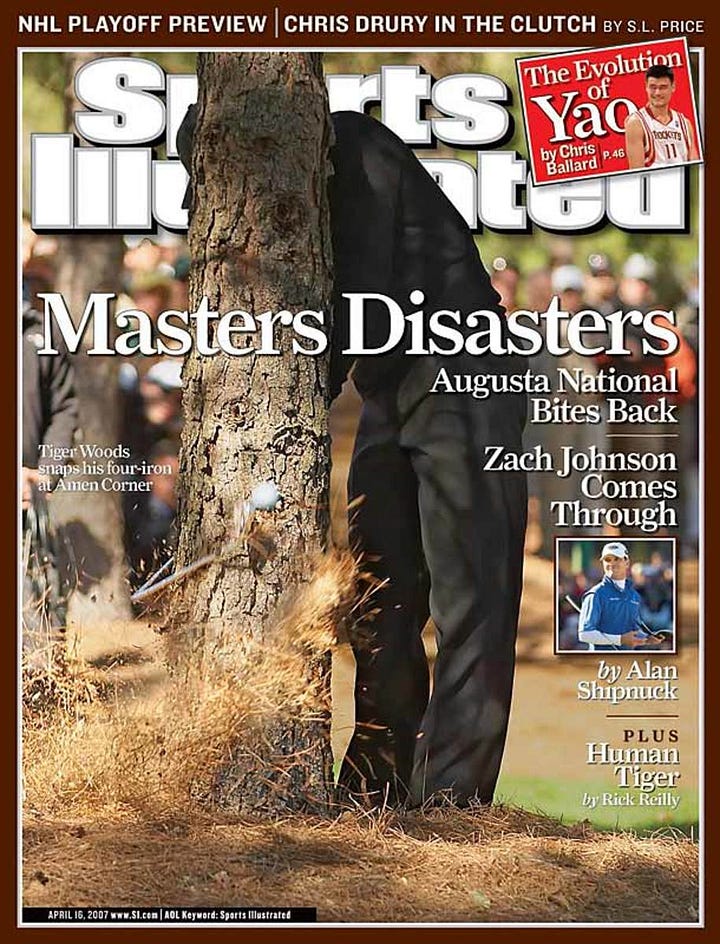
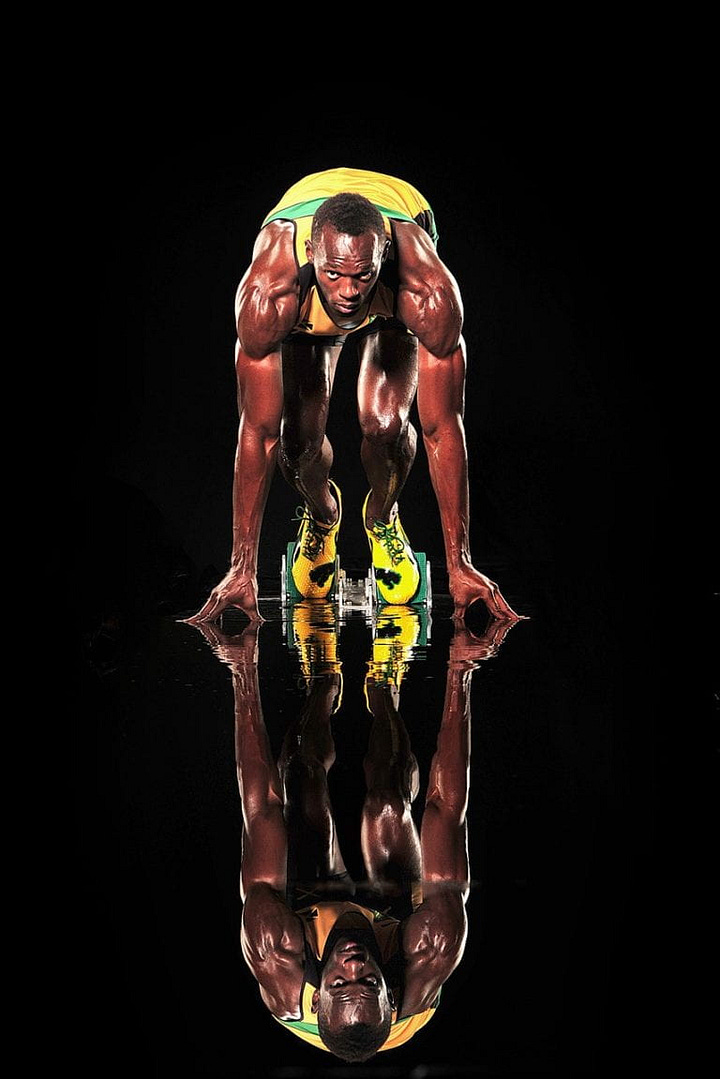
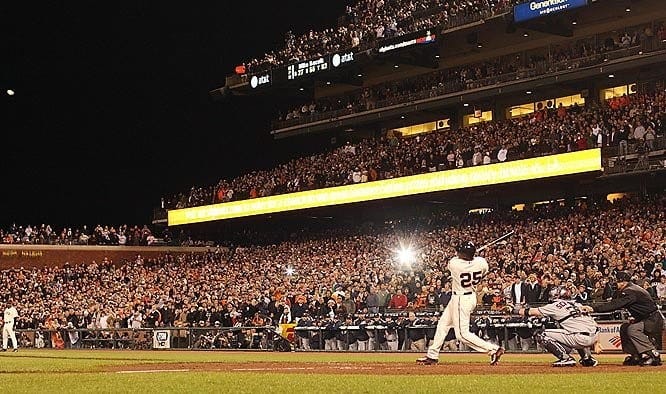
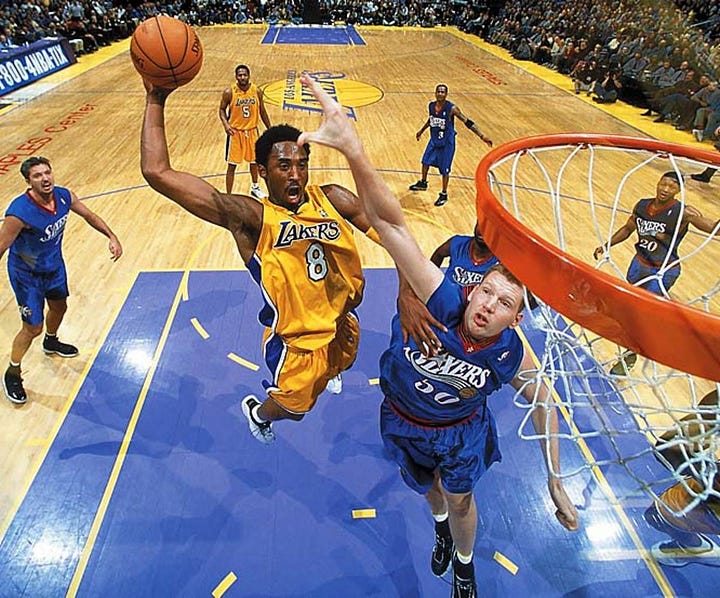
The One
Every photographer has The One. The single most iconic or valuable photo he or she has ever taken in their career. There may be different reasons for why it is so, but they all have one.
Robert Beck’s most famous image was taken at the 1999 FIFA Women’s World Cup Final at the Rose Bowl in Pasadena, California. He was one of four photographers covering the event for Sports Illustrated. He had to shoot an overview from the top of the stadium during the first half, which actually took the entire first half to accomplish because President Clinton showed up late to the game. His security detail had "swept" the upper reaches of the Rose Bowl and would not let Beck actually get on the roof until he arrived. As the second half neared its end and was clearly ending in a tie—Beck realized there would be a shootout to decide the World Cup Champion. After asking his buddy—who was a coach—which end they’d do the shootout in—Beck began working his way through the stadium to get there. Problem was—he didn’t have field-level credentials. Other photographers did but he didn’t. He knew the Rose Bowl having shot USC football games there. There are only two tunnels to the field level. This was pre-9/11 so Beck just walked out onto the field surface and found a spot in the grass up against the stadium wall about 25 yards directly behind the goal.
As he recalls the moment, a LA Times photographer dashed over to join him, asking if he too could shoot from there. Just as that happened, several red-coated security personnel ran over and told the two of them that they couldn’t be there. Move Now!” The Times guy was led off by the security personnel while Beck was gathering up his bags of equipment and tripods. The same security guy said, hurry up and then in the same instant said never mind—it’s too late. Stay right there and don’t move! Robert quickly got his favorite Nikon body and lens—still shooting slides back in ‘99—and sat down quickly without a tripod. He took photos throughout the shootout which eventually got to the final penalty kick by the US to break the scoreless tie. As history recalls, Brandi Chastain drilled the penalty kick past the goalie for the national team of China and won the game. Given that Beck was shooting slide film he had no preview of what he had shot. He shipped his rolls off to New York and the photo was chosen as that week’s iconic cover. Once again, Robert was in the right place at the right time to witness this explosive cultural event in women’s sports.
Robert Beck took hundreds of photos each week that were spectacular. Incredible images of touchdowns and winning putts and iconic athletes. Many of those photos became Sports Illustrated covers. And then, he’d be back at it the next week after doing the same. He hadn’t really put much thought that much into the iconic nature of his photograph.
Five or six years later Beck was asked to shoot a NCAA college basketball tourney—the Pete Newell Tournament—in the Bay Area. Brandi Chastain was breaking into sports broadcasting and happened to be there doing that event. The two had never met, so Robert introduced himself. Chastain jumped on him, wrapping her legs around his waist in a big spontaneous hug. She proceeded to tell him how important that photograph had been to female athletes and to women’s sports in general. It had been rare prior to 1999 to see a female on the cover of Sports Illustrated. The photo is said to have launched the soccer careers of millions of adolescent girls and helped spark a new respect the women’s fitness movement due to the revealed athleticism of Chastain and her teammates.
In the 25 years since taking that iconic photo he’s had athletes at different events—mothers and fathers with young children—professional women in unrelated settings—come up to him upon finding out who he was and tell him where they were that day and what the image had meant to them. To this day he gets emotional telling the story of first meeting Chastain.
Technical
Early days—just like today—it was always Nikon. Lots of different bodies with a primary 3 lenses—24-70 2.8, a 70-200 2.8—and a 400 MM also 2.8.
When he made the jump to digital, Beck chose the Nikon D5, still using a newer version of 3 primary lenses: AF-S NIKKOR 24-70mm f/2.8E ED VR, AF-S NIKKOR 70-200mm f/2.8E FL ED VR, and AF-S NIKKOR 200-500mm f/5.6E ED VR. He has shot with all different kinds of setups and has shot an entire series in infrared as you see in the following photo from the Masters in Augusta. Today Beck shoots mostly with a Nikon Z8 or Z9.
Personal and Contact
Robert Beck lives near the beach today in Carlsbad, California with his cats. He still goes out and shoot surfers and sunset in his hometown. His website is loaded with just a slice of his iconic sports imagery.
Of course, I have two of my own Becks hanging on the wall in my office. An iconic shot of the best era of my favorite football team The Denver Broncos, and a profile shot of Tiger Woods blasting a ball towards the lighthouse at Turnberry, Scotland where my father and I played golf together.
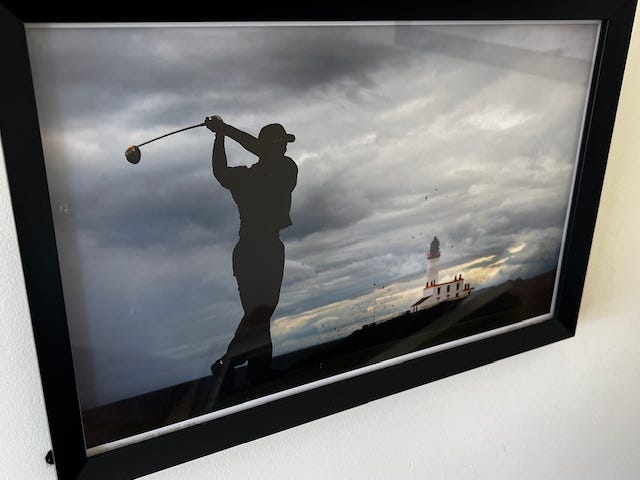
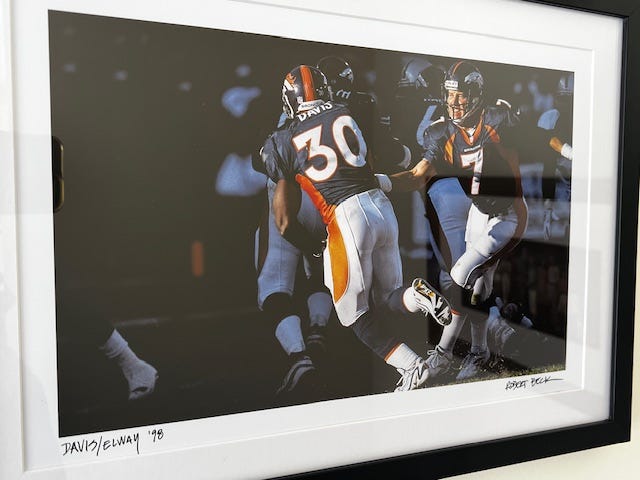
As a sports fan who feels fortunate to have lived in the time of Sports Illustrated, it is a thrill for me to know—and be able to chronicle—some of the background of my friend Robert Beck’s journey, and his images.
I hope you enjoy.




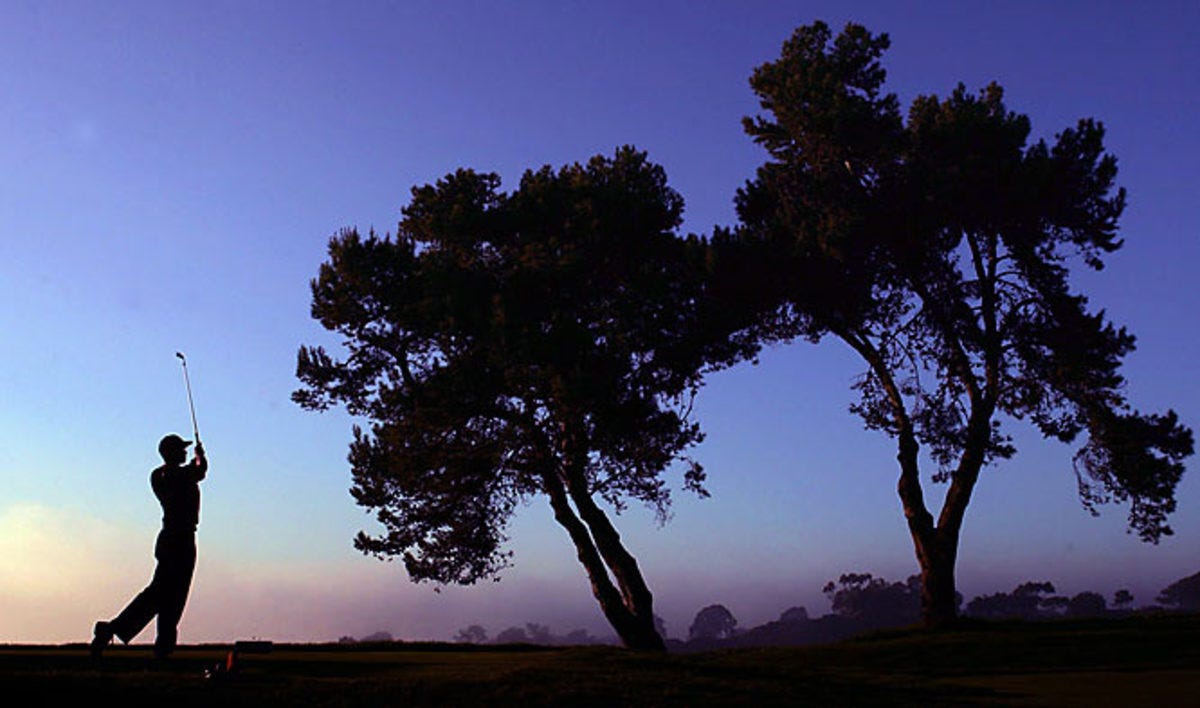
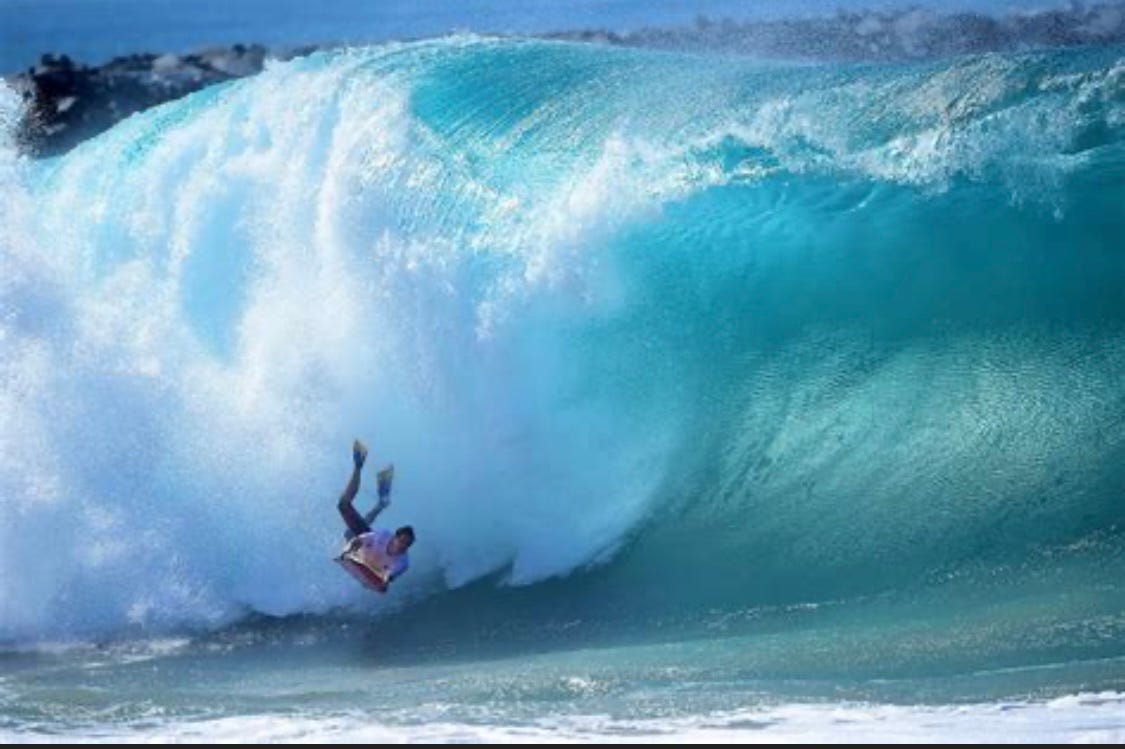
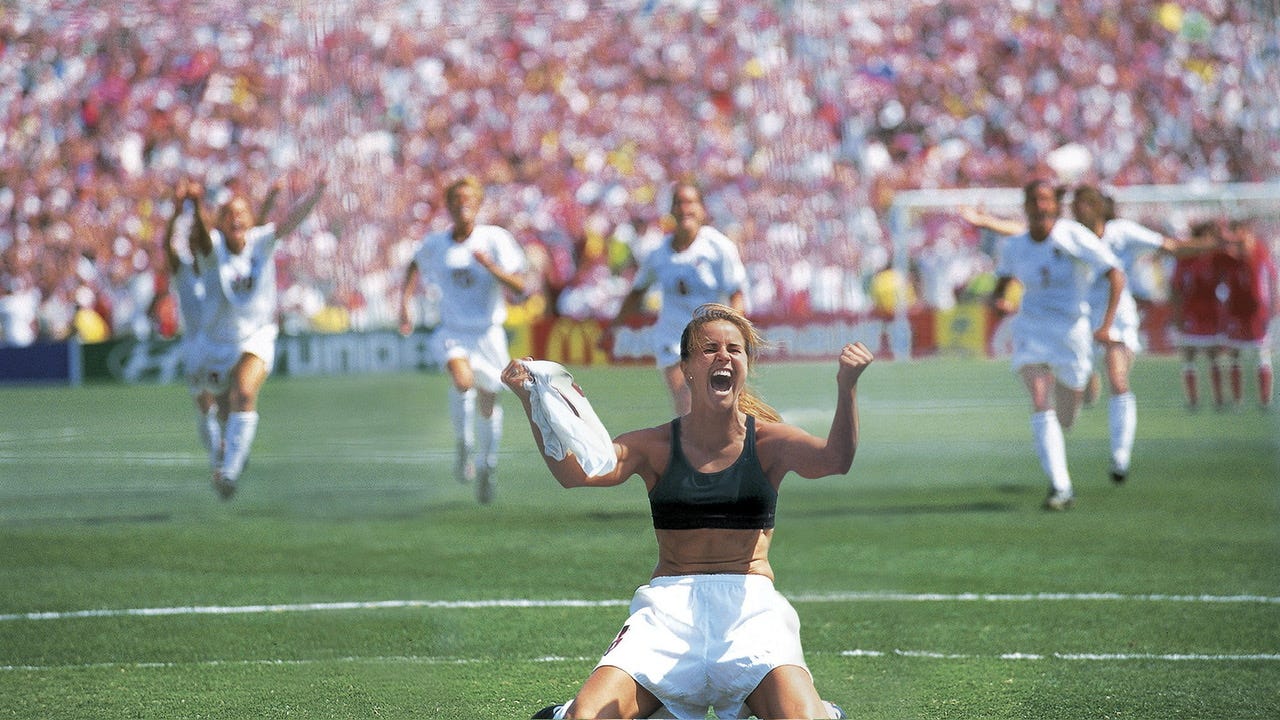

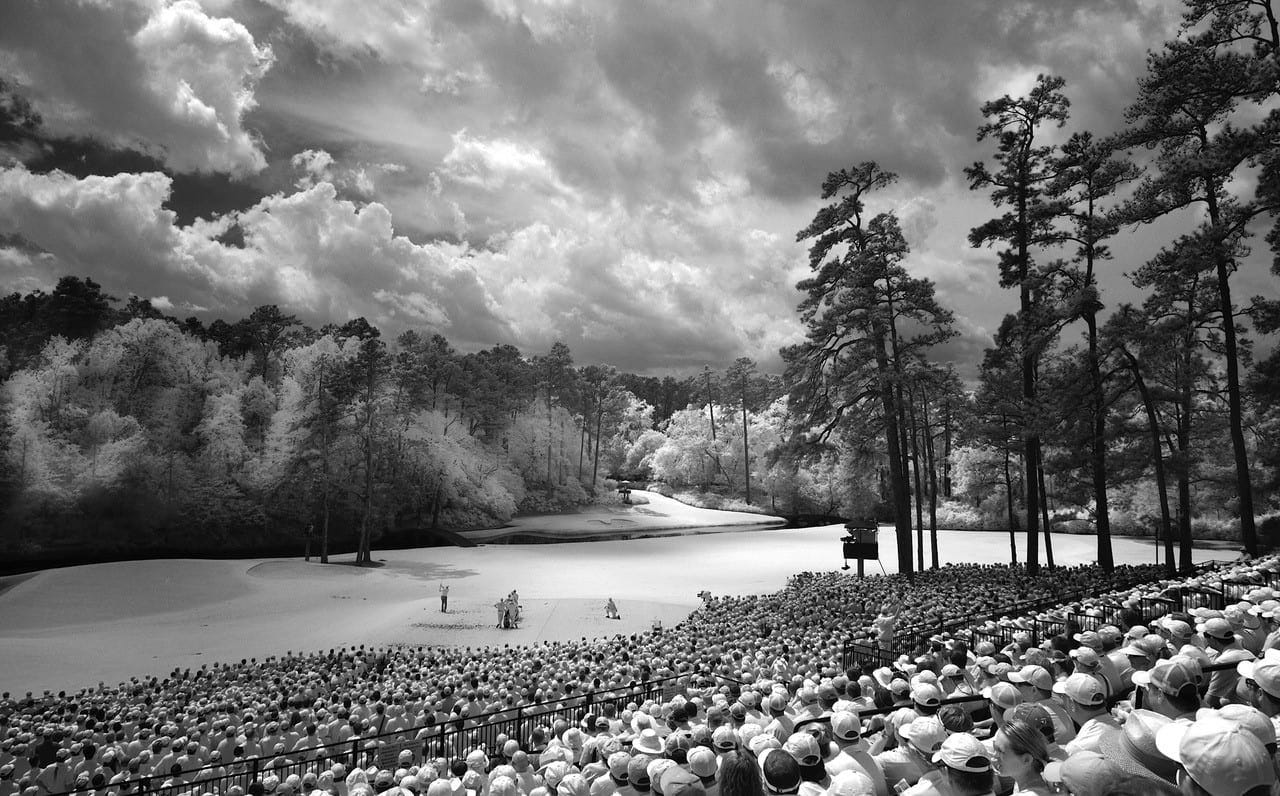
What a fascinating perspective on an unknown G.O.A.T. I appreciate the extensive detail about the history of Beck's career and how he got the shot of Chastain. It's fascinating to think that him being there at that moment may have changed the course of women's sports!
My kids have always played sports where professional photography is involved and the one that blows my mind the most is mountain bike racing. It's interesting hanging out on the course with the photographers and how they position themselves for the shots and what comes of it.
Great essay Dee!
I hope that he reads this wonderful tribute, Dee.
The incredible talent he has, plus right time, right location make his photos unforgettable.